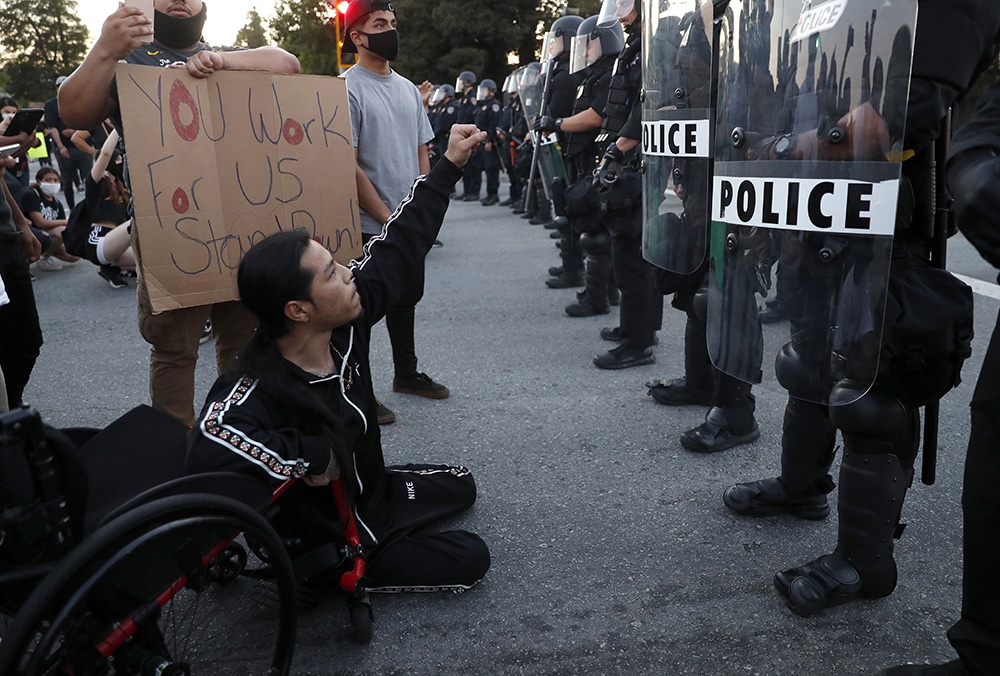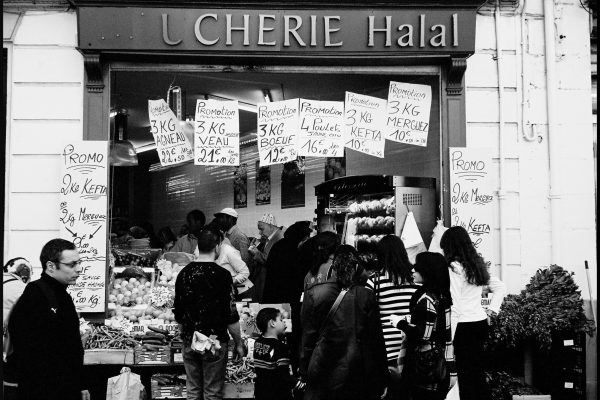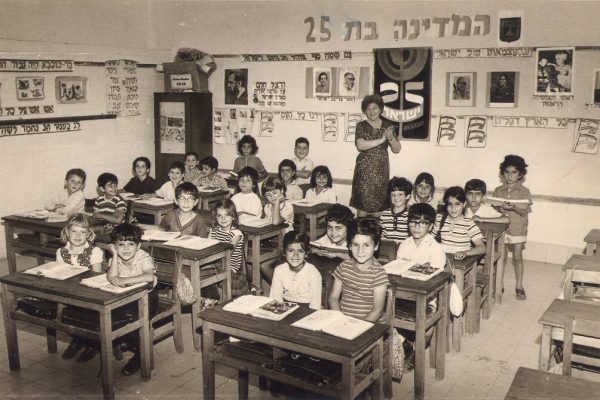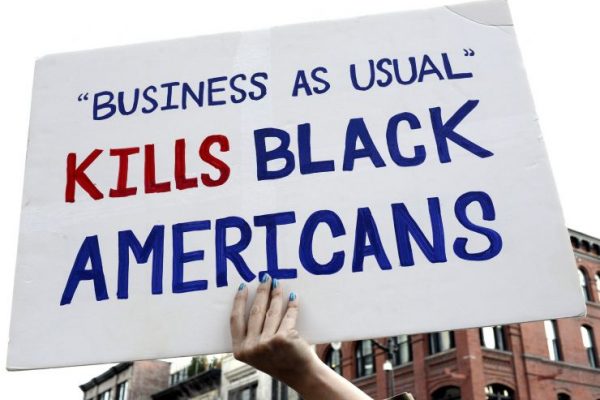A little-known fact is that during the Civil War, the Union Army initially did not rescue or protect Black people they perceived to be disabled. Historian Jim Downs explains that this is because they did not want them to be a burden on the federal government. As Lincoln’s soldiers traveled throughout the South, they instead recorded which plantations had “helpless slaves” under the care of slave owners rather than freeing them. In “The Continuation of Slavery,” Downs offers an example:
Consider Hannah, a blind slave who lived in the Natchez district. Her owner continued to find work for her in both his garden and in his home despite the ending of the institution of slavery. But Hannah was not alone. On a neighboring plantation in Natchez, two blind slaves remained enslaved on William Newtown Mercer’s plantation. Not just in the Natchez district, but throughout the postbellum South, scores of disabled freed slaves remained enslaved. Their continual enslavement varied according to the wishes of their owners and their own physical predicament.
Freedom was not for all Black people, just those who could run, physically toil, and prove their worth as human beings in a capitalist society.
Many disabled Black slaves and their loved ones resisted slavery and capitalism’s valuation of the body and mind based on ability. Black parents hid their disabled children from being abused or sold; other Black parents relied on disabled Black slaves to babysit their children. Slaves physically carried each other into the woods to escape the plantation, including elderly slaves, slaves experiencing pain from rheumatism, and those who had been mutilated as punishment for a prior escape. During Reconstruction, Black families appealed for help to rescue their loved ones from plantations and later lobbied for federal funds to help cover someone who had been denied employment because of age or a disability, real or perceived.
In 2016 and beyond, as activists and protesters fought against police violence that disproportionately impacted Black people, disability justice activists raised awareness around the intersections of ableism and state violence. I knew then that the police primarily capture, cage, or kill poor people, Black people, and Indigenous people. I had not realized that racism, capitalism, and ableism pushed more than half of disabled people into long-term poverty, increasing the chances of violent police encounters. According to the American Psychological Association, people with low vision have unemployment rates that exceed 70 percent, and intellectually and developmentally disabled people have unemployment rates higher than 80 percent. One government report estimates that employers pay more than 220,000 disabled people with intellectual/developmental disabilities less than the already low minimum wage. The government permits this super-exploitation, while also banning disabled people who receive government support from saving more than two thousand dollars total. This cap keeps disabled people in poverty and economically vulnerable positions.
Disabled people are excluded from the labor market (and forced out of schools), not because they cannot work, but because capitalists are not interested in, and are minimally required to, paying for the costs of accommodations. On the plantation, slavers would sell disabled slaves by the dozen at a bargain when it was cheaper than accommodating them and they could not derive profit another way (playing “the dozens”—when Black people make fun of each other until one person wins, and what sourced my mother’s comedy—comes from slaves who were coping with being regrettably sold among the bunch). Under capitalism, it is cheaper to exclude disabled workers who could otherwise work in a non-ableist environment. And by capping savings, and refusing to provide universal health care, universal basic income, and adequate protection against exploitation, the federal government chooses businesses over disabled workers. Writer and activist Marta Russell explains, “If workers were provided with a social safety net that adequately protected them through unemployment, sickness, disability, and old age, laborers would gain a stronger position from which to negotiate their conditions of employment.” These cycles of exclusion from work, schools, and housing creates more jobs, seats in class, and apartments for people without disabilities. Disability justice is also labor, health, and housing justice.
Like slavery, policing also disables people. On a global scale, the United States exports policing tactics and militarism that inflicts disability as a tactic to gain imperial and colonial advantages. Women and gender studies professor Jasbir Puar describes this as debility, “bodily injury and social exclusion brought on by economic and political factors.” Death and the fear of debilitation can discourage and dissuade occupied peoples from resisting the nations that colonize them. Domestically, shootings, beatings, tasings, high-speed chases, and tear gas create and trigger physical impairments, blindness, depression, anxiety, and psychological trauma. During residential raids, cops use stun grenades that cause blindness, deafness, and other injuries. Criminal justice journalist Radley Balko argues that the injuries are not accidental because “even when used and executed as intended, flashbangs cause injury by design, and when used by law enforcement, that injury is inflicted on people who have yet to even be charged with a crime, much less convicted of one.”
Historian LaShawn Harris wrote an extraordinary article around Eleanor that details a long history of resilience, migration, parenthood, and economic exploitation. She was born in North Carolina and migrated to New York to live, love, and parent. She worked as a domestic at the Waldorf Astoria until she underwent a major surgery in her forties and was forced to leave her job. She received very little government assistance because she was “disabled.” Her daughter said in court that her mother began facing mental health challenges and needed support so badly that her older sister once lied to the police so their mother could be committed to a psychiatric ward. Her sister was desperate for help and like many families, depended on calling 911. Eleanor spent almost a year in prison well before she went to New York and faced arrests and involuntary commitments throughout the rest of her life. She still parented and took care of her neighbors’ children, who described her as “nurturing.”
By the time Eleanor was living in her own place again, she developed cordial and good relationships with her neighbors, even babysitting their kids so they could go to school or work. She owed a few hundred dollars in rent. Like my mother before we were evicted, and my grandmother before she was evicted, and countless other poor Black women that I knew, Eleanor made several complaints about the condition of the apartment and withheld rent in protest. Pipes broke. The toilets flooded. At one point, she said that she was withholding rent because her stove and lights did not work. At times, she refused entry to maintenance workers. Other times, she let them in and held a knife for protection. The public housing agency sent a psychiatrist to interview her. He determined that she was not aggressive and held a knife “defensively” like a “security blanket.” He also determined that she should be evicted and then hospitalized. A group of police officers went to announce the eviction order. The Washington Post reported that the cops arrived with “helmets, bulletproof vests, gas masks, Plexiglas shields, a six-foot pronged restraining pole and a shotgun.”
This was the NYPD’s Emergency Service Unit. ESU is a special unit that was “specially trained to deal with emotionally disturbed people.” They kicked down her door. She stood there, naked, approximately 5’8” and almost 300 pounds. She waved a knife at the ESU unit that advanced toward her with a metal bar. Officer Stephen Sullivan, a white ESU cop—the person trained for these situations—shot her in the hand that was holding the knife, and then shot her in the chest. NYPD then carried her naked body outside, uncovered, bleeding. She died en route to the hospital. New York City’s chief medical examiner altered her initial autopsy report to support the police’s story that the officer only fired once; it was not uncommon for newspapers to report that he and other examiners tampered with police cases, destroying and misconstruing data that might have revealed more details about police killings. Sullivan was charged with criminally negligent homicide and faced fifteen years. Eleanor’s neighbors expressed joy at the indictment announcement and hoped for “justice.” Many were angry, saying Sullivan “shot her twice like she was a dog” and that she had trouble walking as proof why she was not a threat. During the trial, white police and white citizens attacked and killed Black people out of anger and retaliation. One paper reported that ten thousand cops surrounded the courthouse to rally against the charges, a figure that the paper considered the largest cop protest in US history. The entire Emergency Services Unit—250 cops—demanded transfers out of the unit in defiance of the indictment. A judge acquitted Sullivan. The department reinstated him and sought funding to purchase stun guns as a reform for future encounters.
The more I studied the case, the more I could not believe it. Black NYPD commissioner Benjamin Ward said that Eleanor Bumpurs “looked like my mother.” That was literally the line President Obama used decades later for Trayvon Martin. Both Black men responded to racist violence with reforms that did not eliminate the root causes of racial violence. For Obama it was My Brother’s Keeper and community policing. For Commissioner Ward, the New York Times reported that he “noted that some good had come from the case because it had brought about a change in police procedures for handling emotionally disturbed people. . . . The new guidelines emphasize negotiation and non-lethal devices such as shock guns, and require the presence of a precinct commander or duty captain to decide how such a person should be restrained.” Eleanor Bumpurs was killed in 1984. Deborah Danner was slain in 2016. Police who had been part of special mental health procedures shot and killed them both.
I wanted to know where the special Emergency Service Unit (ESU) that killed Eleanor came from. It was already intended as a reform measure against police violence. The reform was killing people. On August 22, 1979, five white NYPD cops shot Luis Baez twenty-one times for making a slashing motion with a pair of scissors. Activists and organizers demanded accountability because witnesses said that he was unarmed and clearly in mental distress. Others speculate that he did not understand their English commands because he only spoke Spanish. Subsequently, NYPD created the ESU. A week after Baez’s killing, white NYPD officer Michael Latimer shot and killed Elizabeth Mangum, a thirty-five-year-old Black woman, whom he claims slashed him in the arm when he tried to evict her from her apartment. Because she had been flagged as “emotionally disturbed,” the ESU was on the way to her apartment to assist in the eviction. He killed her before they arrived. There were no civilian witnesses to explain what happened.
NYPD reported that cops responded to over 34,000 calls in 1984 for “emotionally disturbed individuals”; 18,997 were eligible for ESU. The ESU says it acted in 844 cases and only Eleanor was killed. NYPD underscored her death as a tragic departure from the routine behavior of the specialized unit. This is complicated for several reasons. One, NYPD regularly assaulted, shot, and killed Black, brown, and poor residents in the city. At the time of Eleanor’s death, a medical examiner tampered with autopsy findings that tainted the data on police killings. It’s unclear how many homicides actually resulted from police violence. Second, the report did not include any data on the outcomes of the remaining cases. How many “emotionally disturbed people” did the NYPD injure or kill outside of the ESU? Baez and Magnum, for example, would not have counted toward the ESU data had they been killed in 1984. And finally, if we accept the police’s depiction of Eleanor as one death in 844 interventions, we still have to ask, what were the circumstances of the other 843? I did not consider non-killings a success for the police, who were still tasked with managing public housing, private property, racism, inequality, and mental health. What the city invests to evict people with police could be a starting investment to pay for rent and quality mental health options, not violence. This is why the kind of abolition that I believe in does not aim for the police to politely evict elderly Black grandmothers from their government-subsidized apartments. Rather, it aims to eliminate the police contact by addressing the root of the problem, and ultimately policing.
As individuals and communities are building preventative and emergency responses, cities must also stop dispatching cops to people in mental distress, especially since the police use the word “crisis” to escalate their violence. For more than three decades, the Crisis Assistance Helping Out on the Streets (CAHOOTS) program in Eugene, Oregon, has handled nearly 20 percent of the city’s 911 calls without police. CAHOOTS is staffed by a local clinic and dispatches unarmed, non–law enforcement medics and crisis workers for mental health-related crises, including conflict resolution, welfare checks, substance abuse, suicide threats, and more, relying on trauma-informed de-escalation and harm-reduction techniques. More than 60 percent of CAHOOTS’s clients are homeless, and “30% live with severe and persistent mental illness (SPMI).” In 2019 they responded to 24,000 calls and called for police backup 311 times—about 1 percent of the time. Other cities are following Eugene’s lead, cities as large as San Francisco and Los Angeles. While these programs can be a step toward reducing our reliance on police, they are not necessarily abolitionist. The cities that have these alternatives will still use cops for evictions or to respond to theft, sexual violence, etc. Which is why it is especially important to undermine the conditions that give rise to violence and displacement in the first place.
Additionally, if we want to reduce and eliminate ableism and disabling injuries, then we have to reduce and eliminate police. Media and police dismissed Korryn Gaines for calling the police “kidnappers,” but cops have a long history of kidnapping Black, brown, Muslim, and poor people for detention and torture. In Baltimore, police conduct life-altering “rough rides” to intimidate and injure the people they arrest. In 1997 four NYPD officers violently cracked Abner Louima’s teeth and sodomized him with a broomstick. Louima had to undergo several intestinal surgeries. A decade later he was still having issues from his previously perforated bladder, and pain from the horrific memories. Louima received $8.75 million, the largest payout for a police brutality case at the time. He used the money to open hospitals and fund educational opportunities in his homeland, Haiti. Between 1972 and 1991, Chicago Police Department commander Jon Burge allegedly led a torture ring against Black Chicagoans, using “racial epithets, electric shock, suffocation, and brutal beatings.” The Chicago Torture Justice Center offers healing resources to the Chicago Police Department victims and their families who suffered physical and psychological torture. The center was founded as a result of the organizing efforts of We Charge Genocide, a coalition of activists who won financial reparations and free tuition as a result of the campaign. Middle-school students across the city will also learn the history of this torture and the campaigns to stop it. Aislinn Pulley, the center’s director, emphatically says that the police torture justice center that she runs should not be the only one in the United States, and not even the only one in Chicago: “We know that Burge was not the first police officer to use torture techniques and he’s not the last.” We need local communities to fight to ensure the collective memories of the policing behavior and serve as a resource for healing, justice, and reparations.
Torture, policing, prisons, capitalism, and colonialism attempt to control and suppress the lives that we desire. Lives full of care, curiosity, reflection, intimacy. When Audre Lorde returned home after receiving breast cancer treatments, she wrote: “At home I wept and wept and wept, finally. And made love to myself, endlessly and repetitively, until it was no longer tentative. Where were the dykes who had had mastectomies? I wanted to talk to a lesbian, to sit down and start from a common language, no matter how diverse.” She credits the love and care of women for keeping her alive for as long as she lived. Even women she did not know and sometimes women she did not like.
We seek and forge these communities of care and struggle, and can provide them for others, too. These communities will be especially important to prepare for and politically resist what’s ahead. As Sins Invalid explains:
Each day the planet experiences human-provoked mudslides, storms, fires, devolving air quality, rising sea levels, new regions experiencing freezing or sweltering temperatures, earthquakes, species loss and more, all provoked by greed-driven, human-made climate chaos. Our communities are often treated as disposable, especially within the current economic, political and environmental landscapes.
Without resistance and organizing, the destruction of the planet will have catastrophic consequences on all of our bodies, minds, and souls. And the police help facilitate the destruction of Earth by advancing and facilitating the torture, displacement, ableism, and death that makes it easier for companies to make a profit from our communities. We must not let them.
Editors’ Note: This essay is excerpted from Becoming Abolitionists: Police, Protests, and the Pursuit of Freedom by Derecka Purnell, with permission of Astra House. Copyright © 2021 by Derecka Purnell. All rights reserved.









